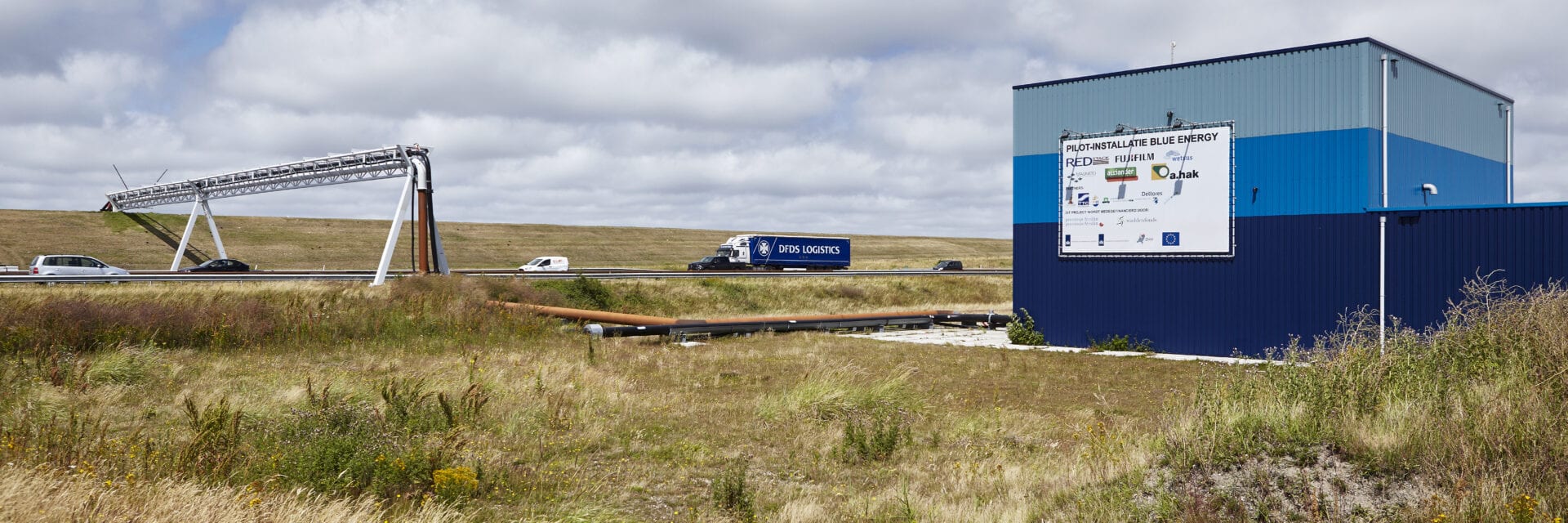Why
Fossil fuels like oil and gas will run out. The regional government collaborating in De Nieuwe Afsluitdijk project want to offer room to new forms of sustainable energy. This ensures that we will no longer need to completely rely on fossil fuels in the future.
Blue Energy is a great example of CO2-free, continuous power generation. This process extracts energy from fresh and saltwater. Seawater is always moving. Windmills can be inoperational at times, due to too little or too much wind, and solar panels only generate little energy during winter.
REDstack won the title of National Icon 2016 with its Blue Energy project and subsequently gained access to a large network in the Netherlands and abroad. More information about the National Icon 2016 title can be found on their website.
More information about REDstack can be found at this page.

How
Blue Energy is based on the natural property of eliminating concentration differences. Just like a combination of warm and cold air lead to a moderate temperature, a mix of fresh and saltwater leads to slightly saltwater, or brackish water.
Blue Energy uses membrane technology for this: two types of extremely thin membranes allow the water to flow through. Saltwater as two types of particles: positively charged (including sodium) and negatively charged (including chloride).
One membrane only lets through positive particles, and the other only negative particles. By stacking these membranes in an alternating manner – “stacking” them –, the positive and negative particles each flow in a different direction. This creates a type of battery with a positive and a negative side. By connecting these two sides using electrodes, the voltage difference is converted into electricity. The included diagram shows how this process works:

This technology can create energy anywhere in the world where fresh and saltwater flows meet. For example, where a river enters the sea, or where purified sewage water of a sewage plant flows into the sea.
When
The goal is to generate continuous sustainable power at an attractive rate. This is why Blue Energy is a very interesting technique for the continuous generation of sustainable energy. But when can we start using the electricity generated by Blue Energy?
To make this possible, the demonstration plant in Breezanddijk must first demonstrate that it will continue to be effective in a larger configuration and for end-users. In larger configurations like power plants, but also in industrial processes where a lot of freshwater is used.
The plant on the Afsluitdijk will ultimately be connected to the power grid to enable people to actually use the generated electricity. The next step is expanding the plant to make the system cheaper and make it available on the market.

